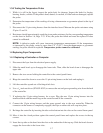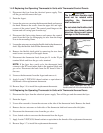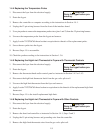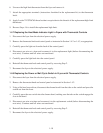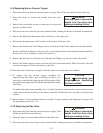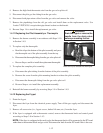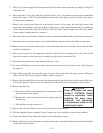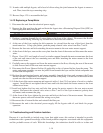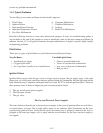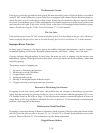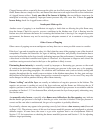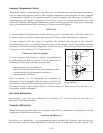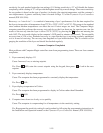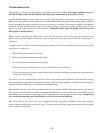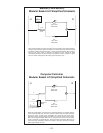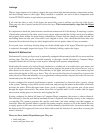1-15
correct any problem encountered.
1.5.1 Typical Problems
You are likely to encounter problems in these broad categories:
Read the following sections to learn more about each category. A series of troubleshooting guides is
also included at the end of the chapter to assist in identifying some of the more common problems. In
addition, Section 1.5.2 will guide technicians through interpretation of digital controller lights, helpful
in diagnosing problems.
Pilot Failure
There are two types of pilot failure: no pilot fl ame and unreliable pilot fl ame.
Ignition Failure
Ignition failure occurs when the gas valve no longer receives power, the gas supply stops, or the pilot
fl ame goes out. Solid-state controllers indicate ignition failure by illuminating the heat light and trouble
light simultaneously. Computers and digital timers will read HELP to indicate ignition failure. There are
three primary areas of focus in diagnosing and correcting ignition failure:
1. The gas and electrical power supplies
2. The electronic circuits
3. The gas valve.
1. Pilot Failure
2. Ignition Failure
3. Improper Burner Function
4. Improper Temperature Control
5. Gas Valve Malfunction
6. Computer Malfunction
7. Filtration Malfunction
8. Leakage
9. Basket Lift Malfunction
No pilot fl ame:
• Insuffi cient gas supply
• Clogged pilot orifi ce
• Air in gas lines (usually in new installations).
Unreliable pilot fl ame:
• Open or grounded high limit
• Loose or corroded wire connections
• Low or no voltage out of thermopile
• Bad gas valve.
The Gas and Electrical Power Supplies
The main indicators that the gas or electrical power supply is the cause of ignition failure are as follows:
an entire battery of fryers fails to light, and/or there are no indicator lights illuminated on the fryer
experiencing ignition failure. Verify that the quick disconnect hose is properly connected, the fryer is
plugged in, the main gas supply valve is open, and the circuit breaker for the fryer electrical supply is
not tripped.



